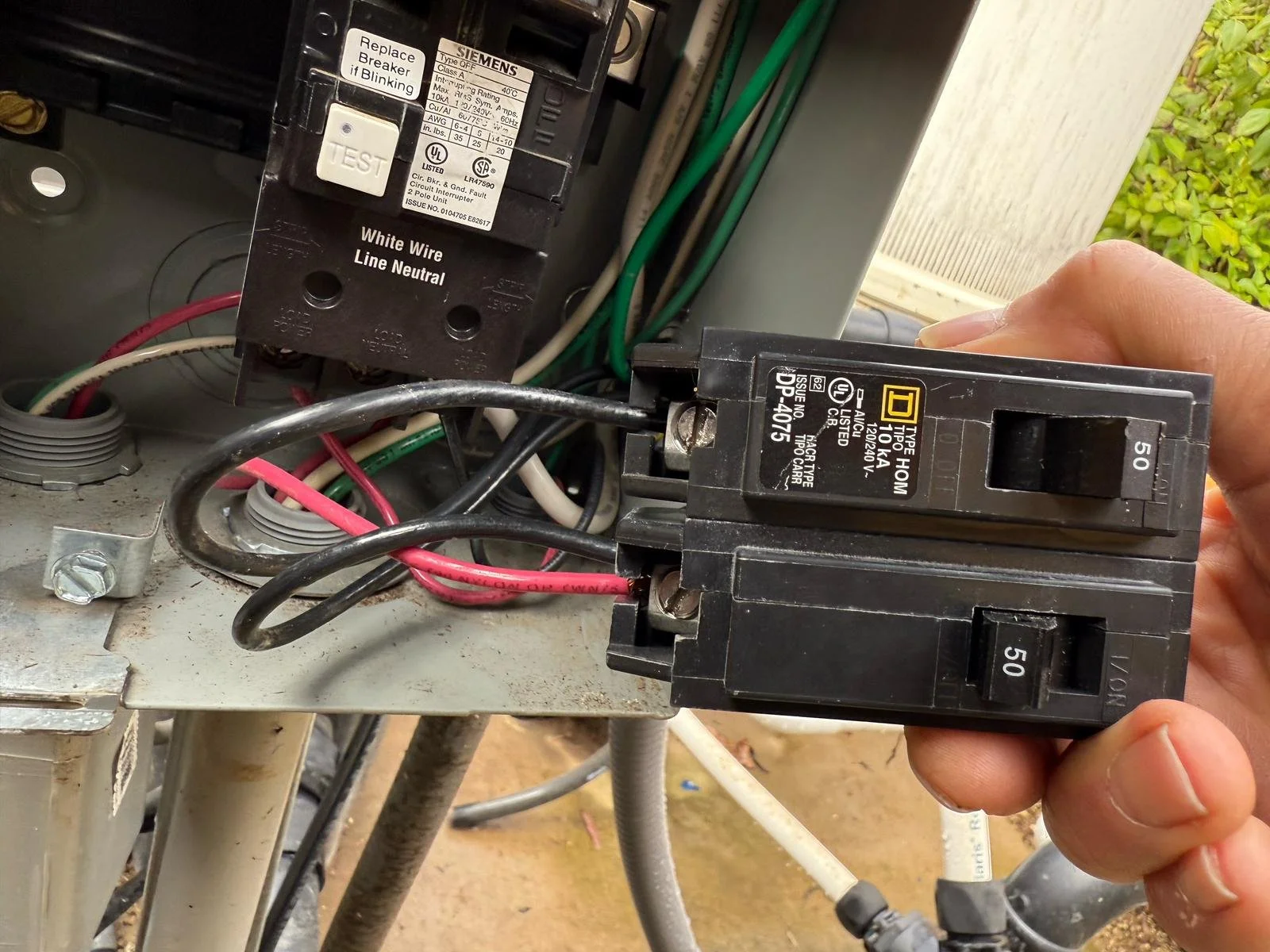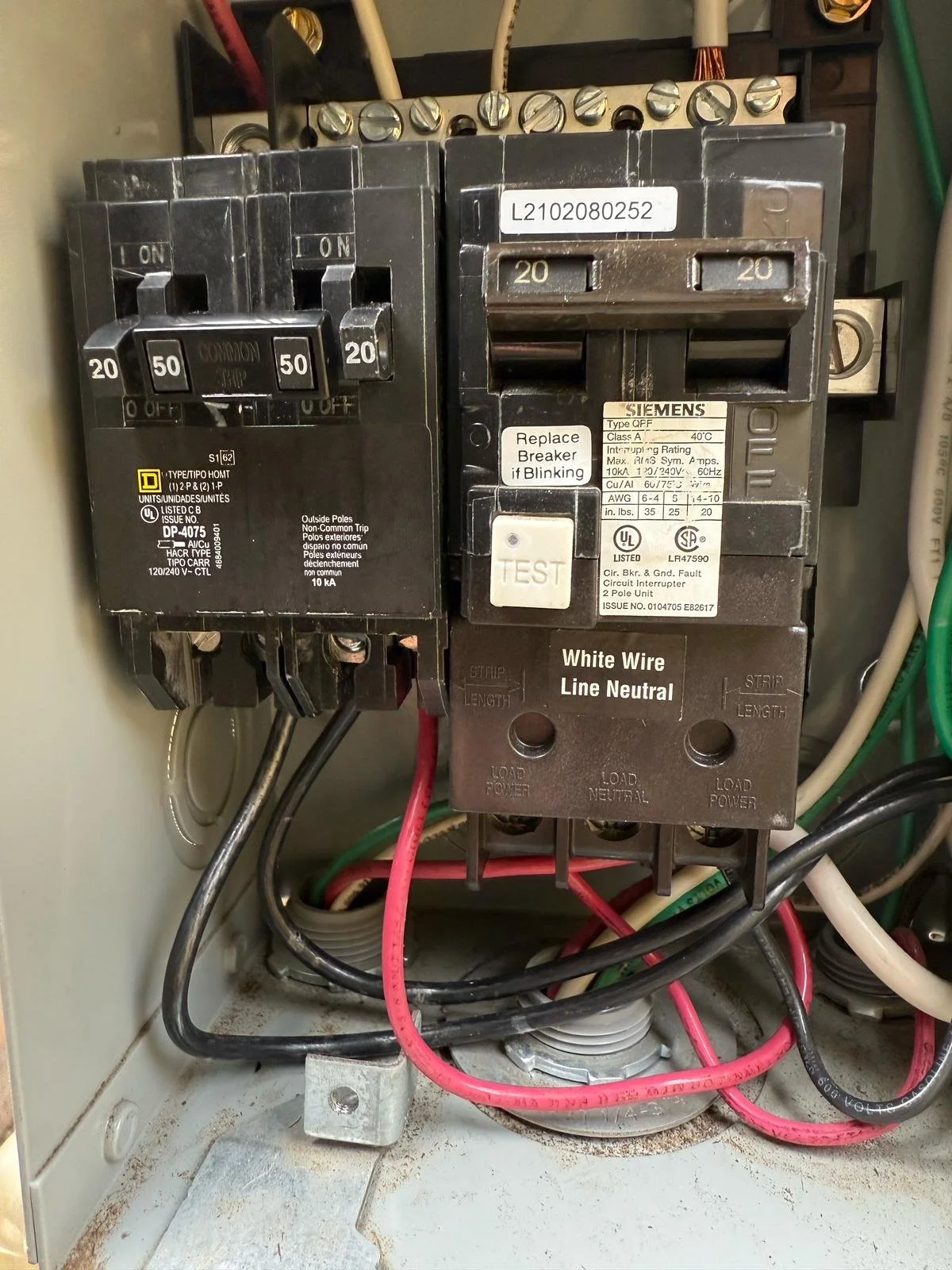The Hidden Danger of Double-Tapping a Breaker – Why It’s a Big Problem
When it comes to electrical work, small mistakes can lead to big risks. One common issue we encounter is double-tapping a breaker—a dangerous and improper wiring practice. Recently, I came across a panel where a non-professional, unqualified individual had double-tapped a 50-amp breaker with a 20-amp breaker. While it may have seemed like a quick fix, this mistake created a serious safety hazard.
What Is Double-Tapping a Breaker?
Double-tapping occurs when two wires are connected to a single breaker terminal. While some breakers are designed for this, most are not. In this case, the 50-amp breaker was not rated for two wires, making the electrical panel unsafe.
Why Is This Dangerous?
Although it might seem like a minor issue, double-tapping a breaker can lead to major problems, including:
Overheating and Fire Risks – A breaker is designed to handle a specific electrical load. Adding an extra connection can overload the breaker, causing it to overheat and potentially start a fire.
Loose Connections and Arcing – When two wires are forced into a terminal not designed for them, they often aren’t secured properly. This can lead to arcing (electrical sparks), flickering lights, or even damaged appliances.
Breaker Malfunction – An improperly wired breaker may trip constantly, causing inconvenience, or worse, it may fail to trip when it should, allowing dangerous electrical faults to go unchecked.


